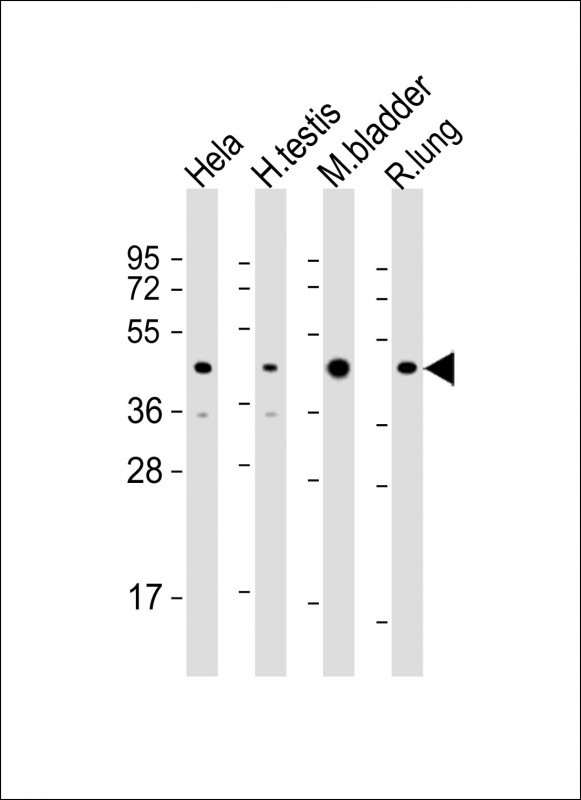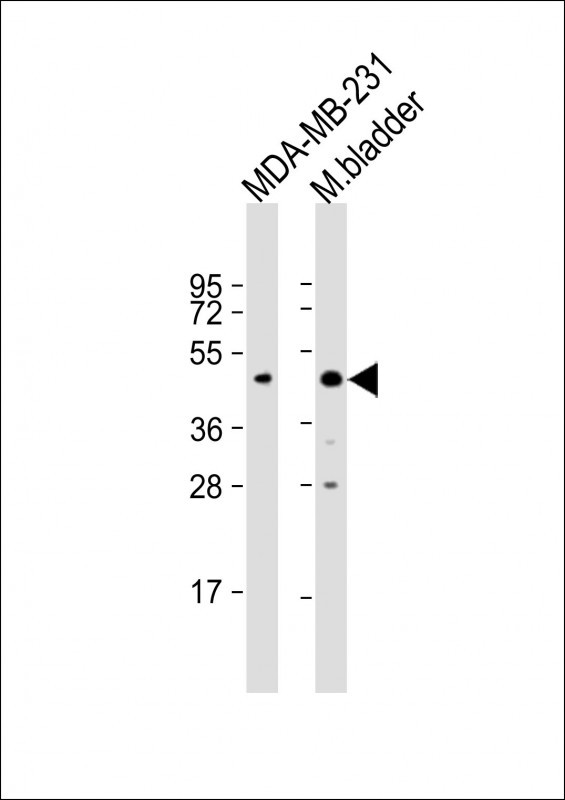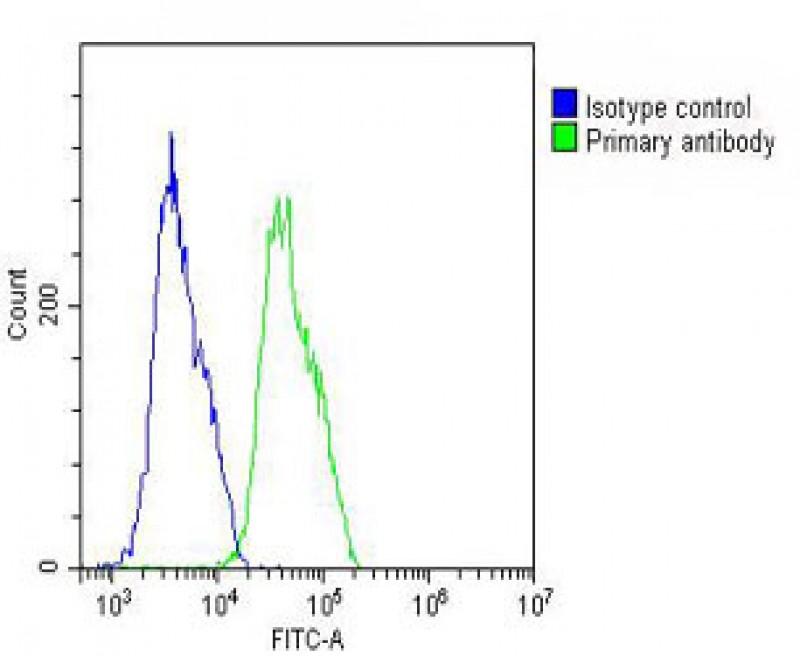WNT4 Antibody (Center)
Purified Rabbit Polyclonal Antibody (Pab)
- SPECIFICATION
- CITATIONS: 3
- PROTOCOLS
- BACKGROUND

Application
| IHC-P, WB, FC, E |
|---|---|
| Primary Accession | P56705 |
| Other Accession | Q9QXQ5, P22724 |
| Reactivity | Human, Mouse, Rat |
| Predicted | Rat |
| Host | Rabbit |
| Clonality | Polyclonal |
| Isotype | Rabbit IgG |
| Calculated MW | 39052 Da |
| Antigen Region | 211-239 aa |
| Gene ID | 54361 |
|---|---|
| Other Names | Protein Wnt-4, WNT4 |
| Target/Specificity | This WNT4 antibody is generated from rabbits immunized with a KLH conjugated synthetic peptide between 211-239 amino acids from the Central region of human WNT4. |
| Dilution | WB~~1:2000 IHC-P~~1:10~50 FC~~1:25 |
| Format | Purified polyclonal antibody supplied in PBS with 0.09% (W/V) sodium azide. This antibody is purified through a protein A column, followed by peptide affinity purification. |
| Storage | Maintain refrigerated at 2-8°C for up to 2 weeks. For long term storage store at -20°C in small aliquots to prevent freeze-thaw cycles. |
| Precautions | WNT4 Antibody (Center) is for research use only and not for use in diagnostic or therapeutic procedures. |
| Name | WNT4 |
|---|---|
| Function | Ligand for members of the frizzled family of seven transmembrane receptors (Probable). Plays an important role in the embryonic development of the urogenital tract and the lung (PubMed:15317892, PubMed:16959810, PubMed:18179883, PubMed:18182450). Required for normal mesenchyme to epithelium transition during embryonic kidney development. Required for the formation of early epithelial renal vesicles during kidney development (By similarity). Required for normal formation of the Mullerian duct in females, and normal levels of oocytes in the ovaries (PubMed:15317892, PubMed:16959810, PubMed:18182450). Required for normal down-regulation of 3 beta-hydroxysteroid dehydrogenase in the ovary (PubMed:15317892, PubMed:16959810, PubMed:18182450). Required for normal lung development and for normal patterning of trachael cartilage rings (By similarity). |
| Cellular Location | Secreted, extracellular space, extracellular matrix |

Provided below are standard protocols that you may find useful for product applications.
Background
The WNT family consists of secreted signaling proteins. These proteins have been implicated in oncogenesis and in several developmental processes, including regulation of cell fate and patterning during embryogenesis. WNT4 is a protein which shows 98% amino acid identity to the Wnt4 protein of mouse and rat. It play a concerted role in both the control of female development and the prevention of testes formation.
References
Kuulasmaa,T., Horm. Metab. Res. 40 (10), 668-673 (2008)
Miyakoshi,T., Endocr. Pathol. 19 (4), 261-273 (2008)
If you have used an Abcepta product and would like to share how it has performed, please click on the "Submit Review" button and provide the requested information. Our staff will examine and post your review and contact you if needed.
If you have any additional inquiries please email technical services at tech@abcepta.com.














 Foundational characteristics of cancer include proliferation, angiogenesis, migration, evasion of apoptosis, and cellular immortality. Find key markers for these cellular processes and antibodies to detect them.
Foundational characteristics of cancer include proliferation, angiogenesis, migration, evasion of apoptosis, and cellular immortality. Find key markers for these cellular processes and antibodies to detect them. The SUMOplot™ Analysis Program predicts and scores sumoylation sites in your protein. SUMOylation is a post-translational modification involved in various cellular processes, such as nuclear-cytosolic transport, transcriptional regulation, apoptosis, protein stability, response to stress, and progression through the cell cycle.
The SUMOplot™ Analysis Program predicts and scores sumoylation sites in your protein. SUMOylation is a post-translational modification involved in various cellular processes, such as nuclear-cytosolic transport, transcriptional regulation, apoptosis, protein stability, response to stress, and progression through the cell cycle. The Autophagy Receptor Motif Plotter predicts and scores autophagy receptor binding sites in your protein. Identifying proteins connected to this pathway is critical to understanding the role of autophagy in physiological as well as pathological processes such as development, differentiation, neurodegenerative diseases, stress, infection, and cancer.
The Autophagy Receptor Motif Plotter predicts and scores autophagy receptor binding sites in your protein. Identifying proteins connected to this pathway is critical to understanding the role of autophagy in physiological as well as pathological processes such as development, differentiation, neurodegenerative diseases, stress, infection, and cancer.




